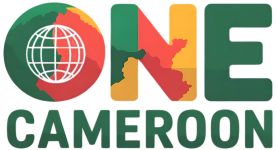Opinion Like a ship tossed by storms, Cameroon continues to sail toward its horizon, sure of its choices and its ambition. Yet, some perverse minds
Analysis Cameroon’s Foreign Policy: Pragmatism and Regional Leadership Cameroon, often described as “Africa in miniature,” also embodies a diplomacy that combines pragmatism and adaptability in
Long before European explorers arrived on its shores, the territory now known as Cameroon was a mosaic of diverse peoples, kingdoms, and cultures shaped by
Cameroon’s economy has historically relied on agriculture, timber, oil, and mining. While these sectors contributed significantly to GDP growth, volatility in commodity prices exposed the
Cameroon’s geographic diversity is encapsulated in its nickname, “Africa in miniature.” Within its borders lie rainforest jungles, rolling highlands, savannah plains, and even portions of
Cameroon’s art scene has blossomed from traditional craftsmanship to a vibrant contemporary movement. Galleries, art centers, and community studios across major cities showcase painting, sculpture,
Cameroon’s forests—spanning lowland rainforests, montane cloud forests, and mangroves—are ecological linchpins for biodiversity, climate regulation, and community livelihoods. Over 40% of the country’s land area
Across Cameroonian cities, a wave of youth-driven entrepreneurship is redefining economic possibilities. Faced with limited formal employment opportunities and a burgeoning youth population—over 60% under
Cameroon’s 402 km coastline supports numerous fishing communities whose livelihoods revolve around artisanal and small-scale commercial fishing. From coastal villages near Limbe to lagoon settlements
As Cameroon pursues economic growth and electrification goals, renewable energy and sustainable practices have emerged as critical components of development strategies. Although the national grid
